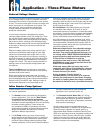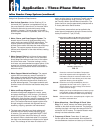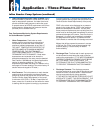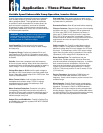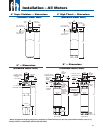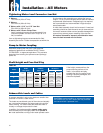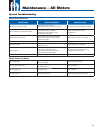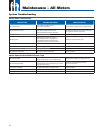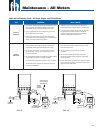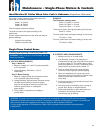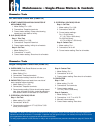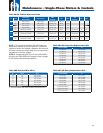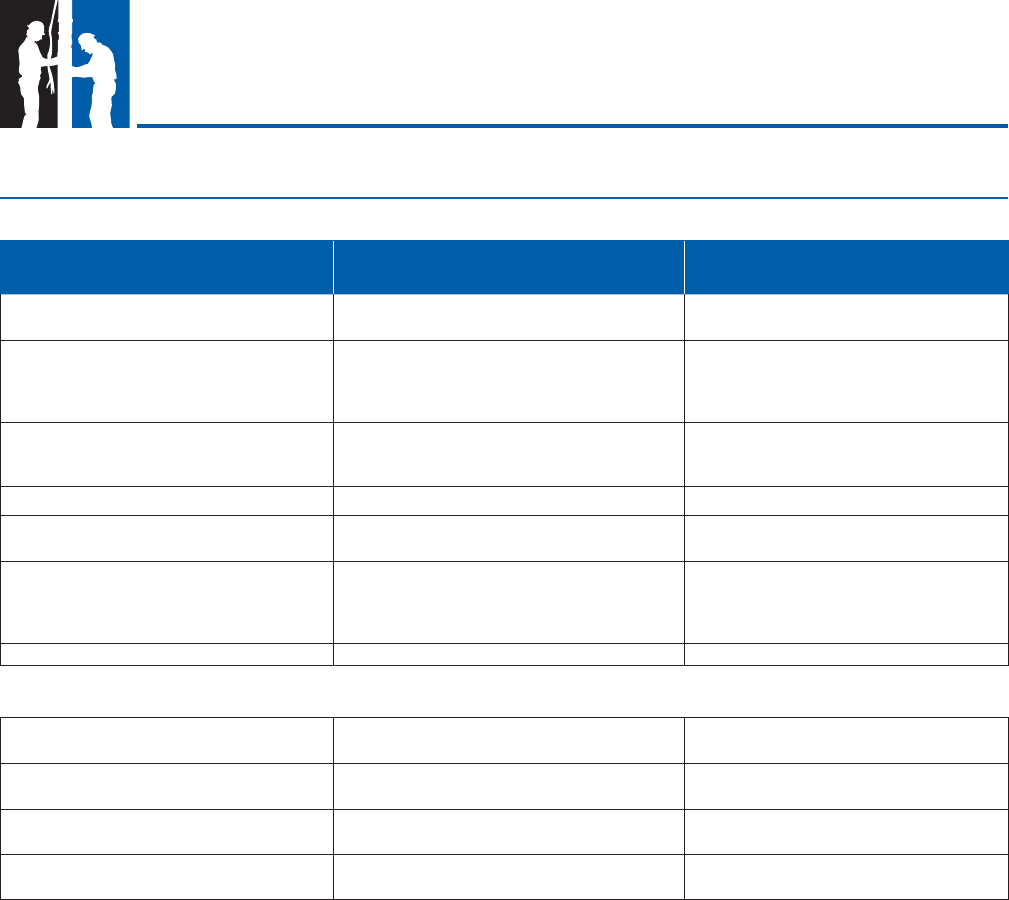
Maintenance – All Motors
System Troubleshooting
POSSIBLE CAUSE CHECKING PROCEDURES CORRECTIVE ACTION
A. No power or incorrect voltage.
Check voltage at line terminals.
The voltage must be ± 10% of rated voltage.
Contact power company if voltage is incorrect.
B. Fuses blown or circuit breakers tripped.
Check fuses for recommended size and
check for loose, dirty or corroded
connections in fuse receptacle. Check
for tripped circuit breakers.
Replace with proper fuse or reset
circuit breakers.
C. Defective pressure switch.
Check voltage at contact points. Improper
contact of switch points can cause voltage
less than line voltage.
Replace pressure switch or clean points.
D. Control box malfunction. For detailed procedure, see pages 46-54. Repair or replace.
E. Defective wiring.
Check for loose or corroded connections
or defective wiring
Correct faulty wiring or connections.
F. Bound pump.
Check for misalignment between pump
and motor or a sand bound pump.
Amp readings will be 3 to 6 times higher
than normal until the overload trips
Pull pump and correct problem. Run new
installation until the water clears
G. Defective cable or motor. For detailed procedure, see pages 44 & 45. Repair or replace.
A. Pressure switch.
Check setting on pressure switch and
examine for defects.
Reset limit or replace switch.
B. Check valve - stuck open.
Damaged or defective check valve will
not hold pressure.
Replace if defective.
C. Waterlogged tank. Check air charge Clean or replace.
D. Leak in system. Check system for leaks. Replace damaged pipes or repair leaks.
Motor Does Not Start
Motor Starts Too Often
42




